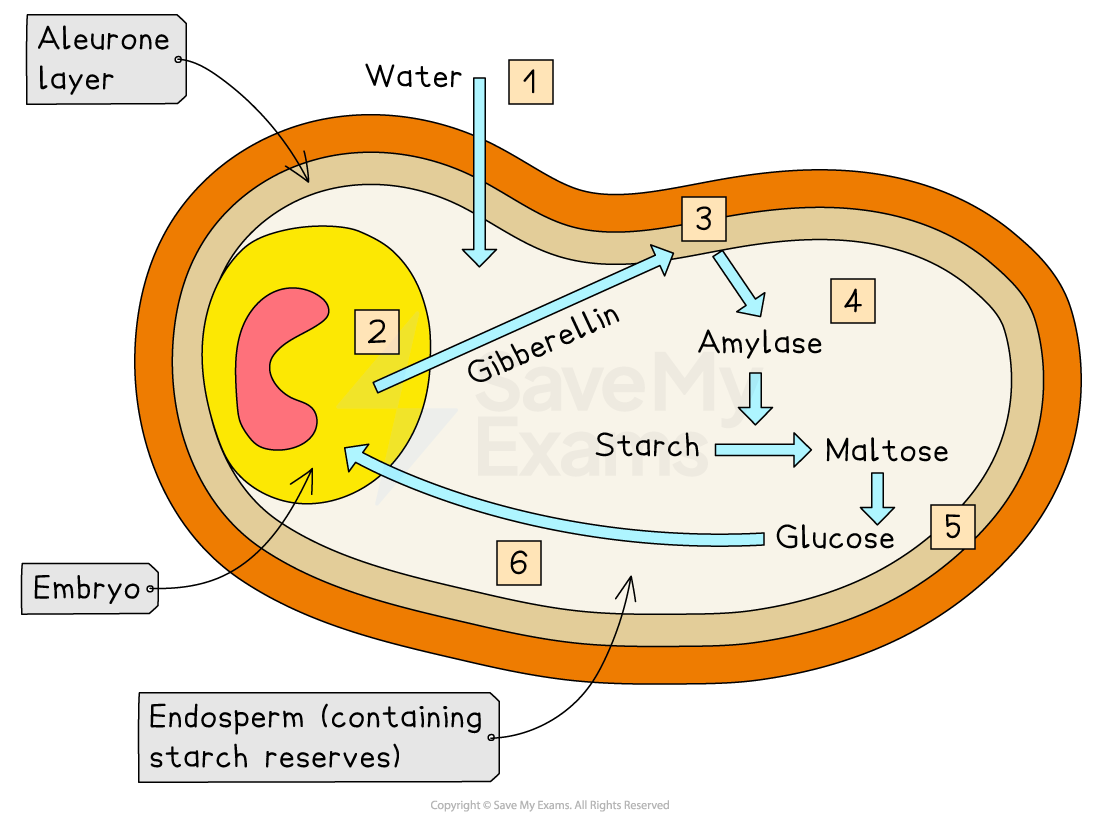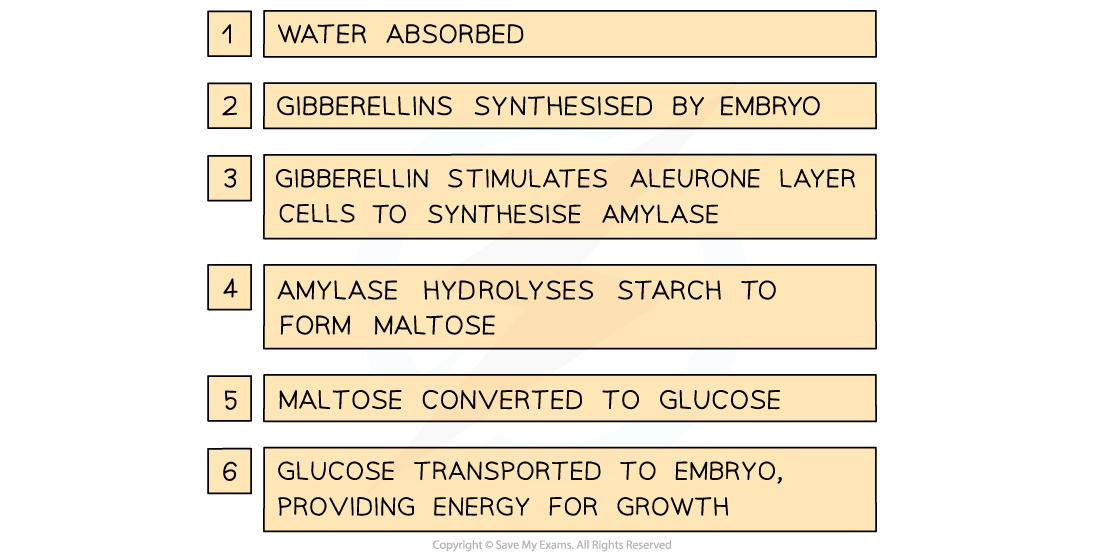The Role of Gibberellin in Germination of Barley (Cambridge (CIE) A Level Biology): Revision Note
Exam code: 9700
The role of gibberellin in germination of barley
Gibberellins are a type of plant growth regulator involved in controlling seed germination and stem elongation
When a barley seed is shed from the parent plant, it is in a state of dormancy (contains very little water and is metabolically inactive)
This allows the seed to survive harsh conditions until the conditions are right for successful germination (e.g. the seed can survive a cold winter until temperatures rise again in spring)
The barley seed contains:
An embryo—will grow into the new plant when the seed germinates
An endosperm—a starch-containing energy store surrounding the embryo
An aleurone layer—a protein-rich layer on the outer edge of the endosperm
When the conditions are right, the barley seed starts to absorb water to begin the process of germination
This stimulates the embryo to produce gibberellins
Gibberellin molecules diffuse into the aleurone layer and stimulate the cells there to synthesise the enzyme amylase
In barley seeds, it has been shown that gibberellin does this by regulating genes involved in the synthesis of amylase, causing an increase in the transcription of mRNA coding for amylase
The amylase hydrolyses starch molecules in the endosperm, producing soluble maltose molecules
The maltose is converted to glucose and transported to the embryo
This glucose can be respired by the embryo, providing the embryo with the energy needed for it to grow



Unlock more, it's free!
Did this page help you?